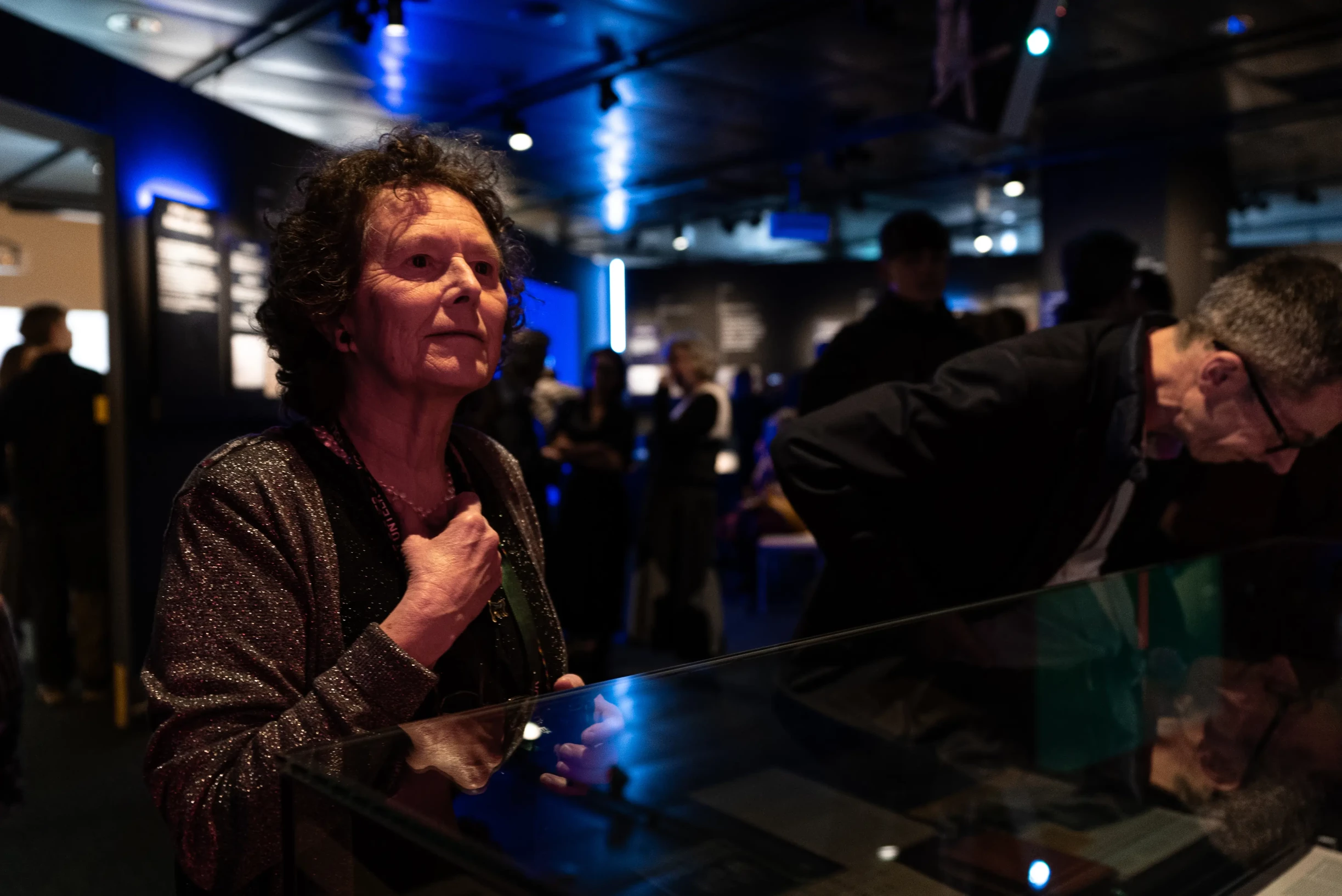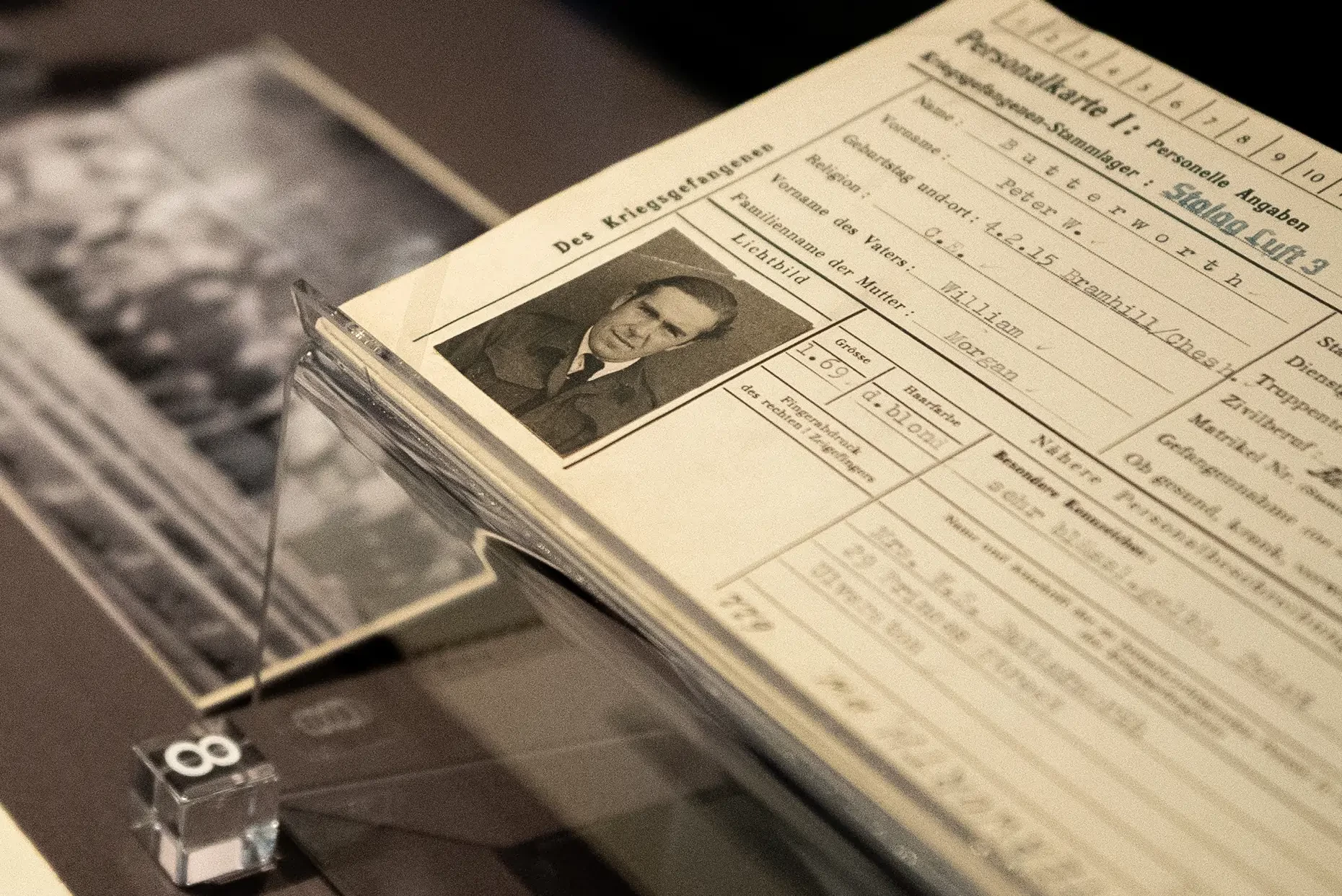Great Escapes at The National Archives
Harnessing the power of beautiful, minimal design in emotive storytelling and immersive experiences
Field with Peter L. Dixon Design
‘Great Escapes: Remarkable Second World War Captives’ is not just an exhibition; it’s an exploration of resilience and creativity in the darkest of times. Unveiling real stories of escape and escapism during wartime, this major new work from The National Archives reveals the power of human spirit.
Field, in collaboration with Peter L. Dixon executed a comprehensive exhibition design, incorporating spatial, graphic, and AV elements. "Field expertly maximised our relatively small gallery space with a modern and minimal exhibition." Juliette Johnstone, Exhibitions Manager, The National Archives.
The journey through capture, life within captivity, and eventual liberation was carefully navigated through an ambitious and sequential experience. The aim was to engage visitors emotionally while delivering a visually striking and informative experience, shedding light on the experiences of Prisoners of War (POWs) and Civilian Internees.
Ted Lees, a Prisoner of War in GermanyCaptivity in life is something that very few could adequately describe. You have to feel it.
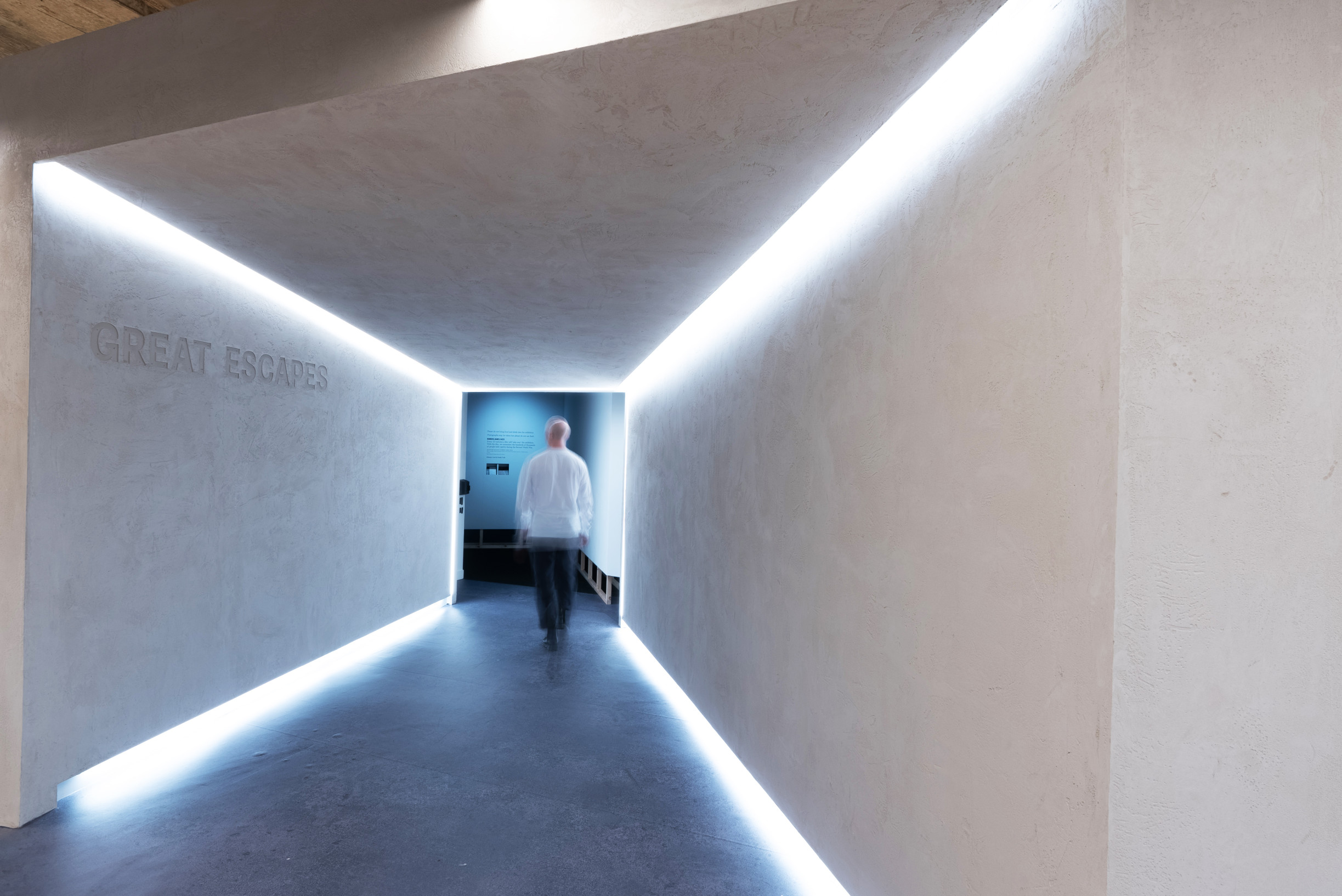
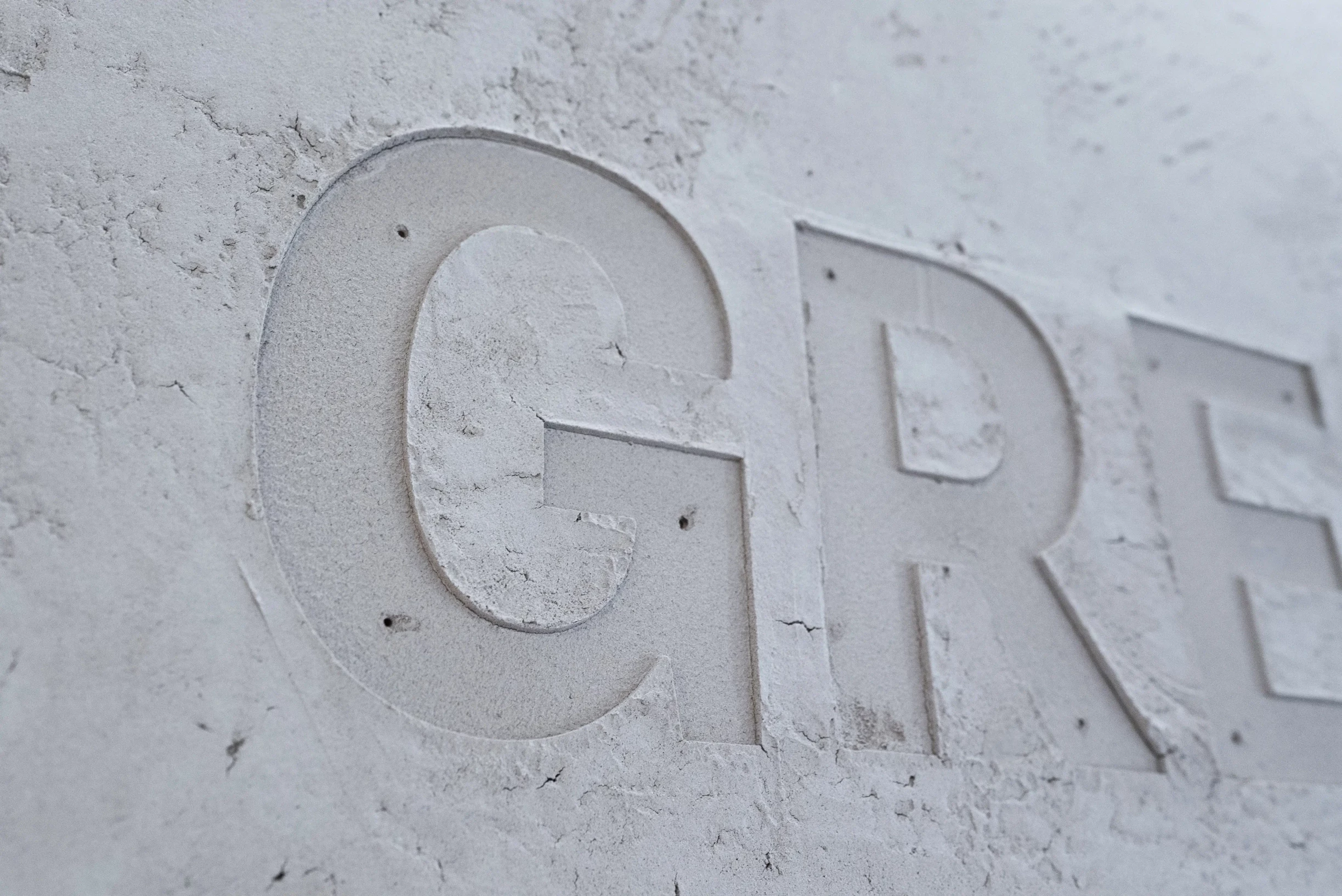
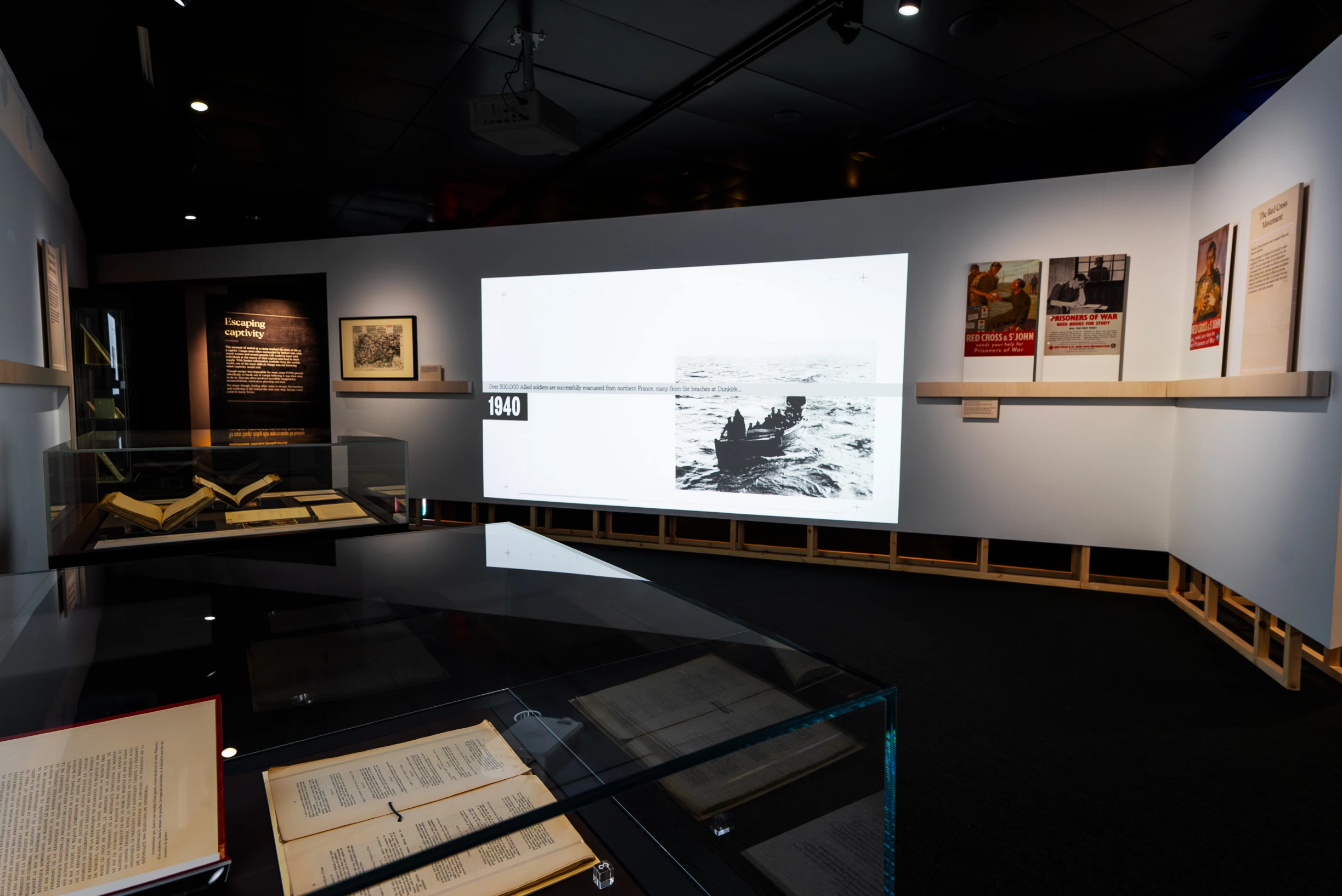
As visitors step into the one-way tunnel, they are thrust into the stark reality of captivity. The tunnel cleanses and reset visitors as they enter, to prepare them for the gallery experience. It’s a journey where you’re deprived of everyday comforts, the colour of life, and even the choice of which way to go. The walls are rough concrete, with the tunnel narrowing down to create a feeling of confinement as you reach the end.
Field applied a consistent suite of materials across the gallery including stained birchwood ply timbers, valchromat, and a sustainable concrete effect finish. Each section’s subsystem creates different tones and in turn atmospheres, adding to the multi-layered experience and narrative.
In area one, white walls and light timbers set a simple and sombre scene, offering context about the Geneva Conventions and the experiences of POWs and Civilian Internees. Reduction was a key design approach across the gallery, in turn letting the breathtaking and shocking content stand out.
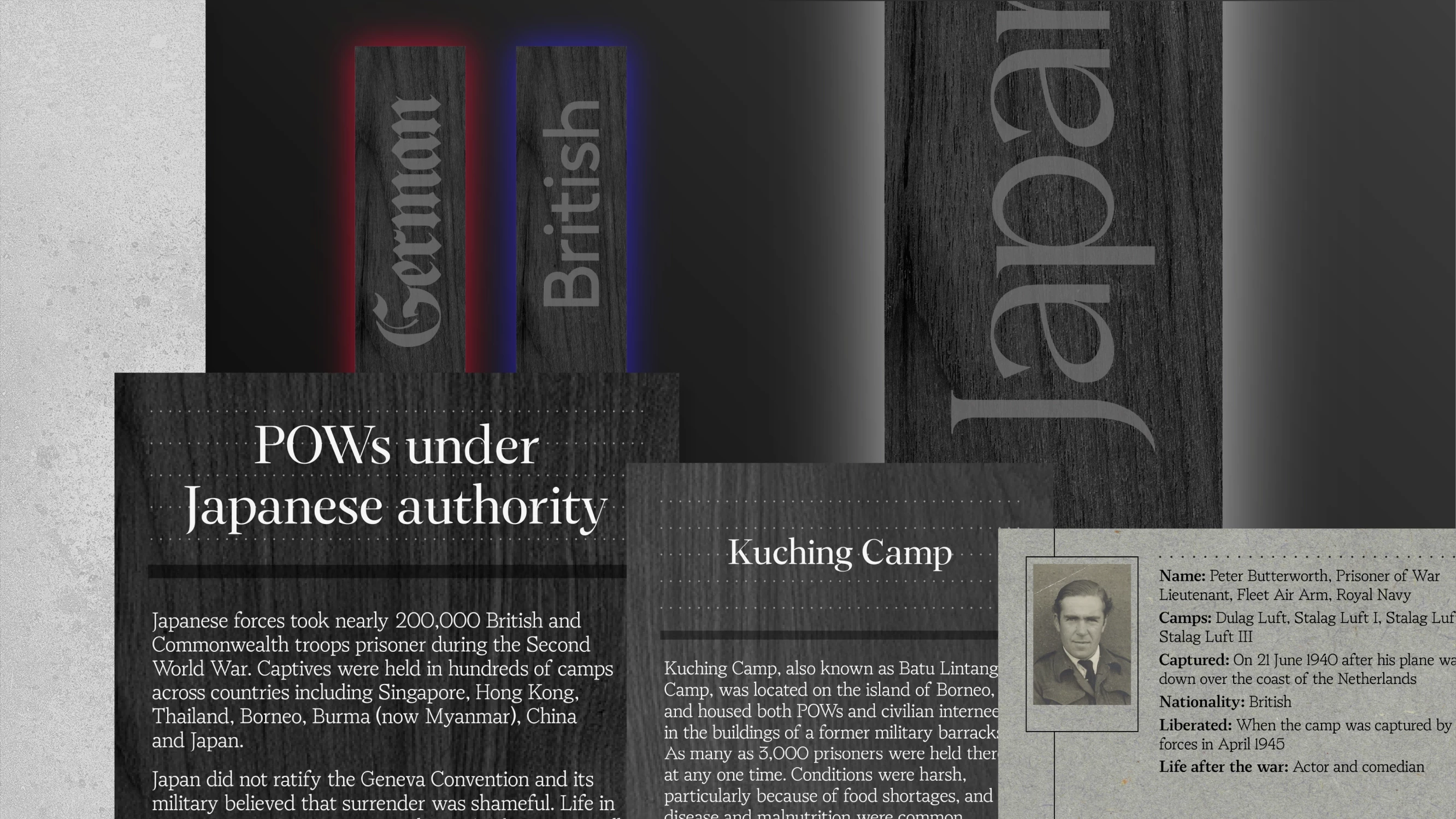
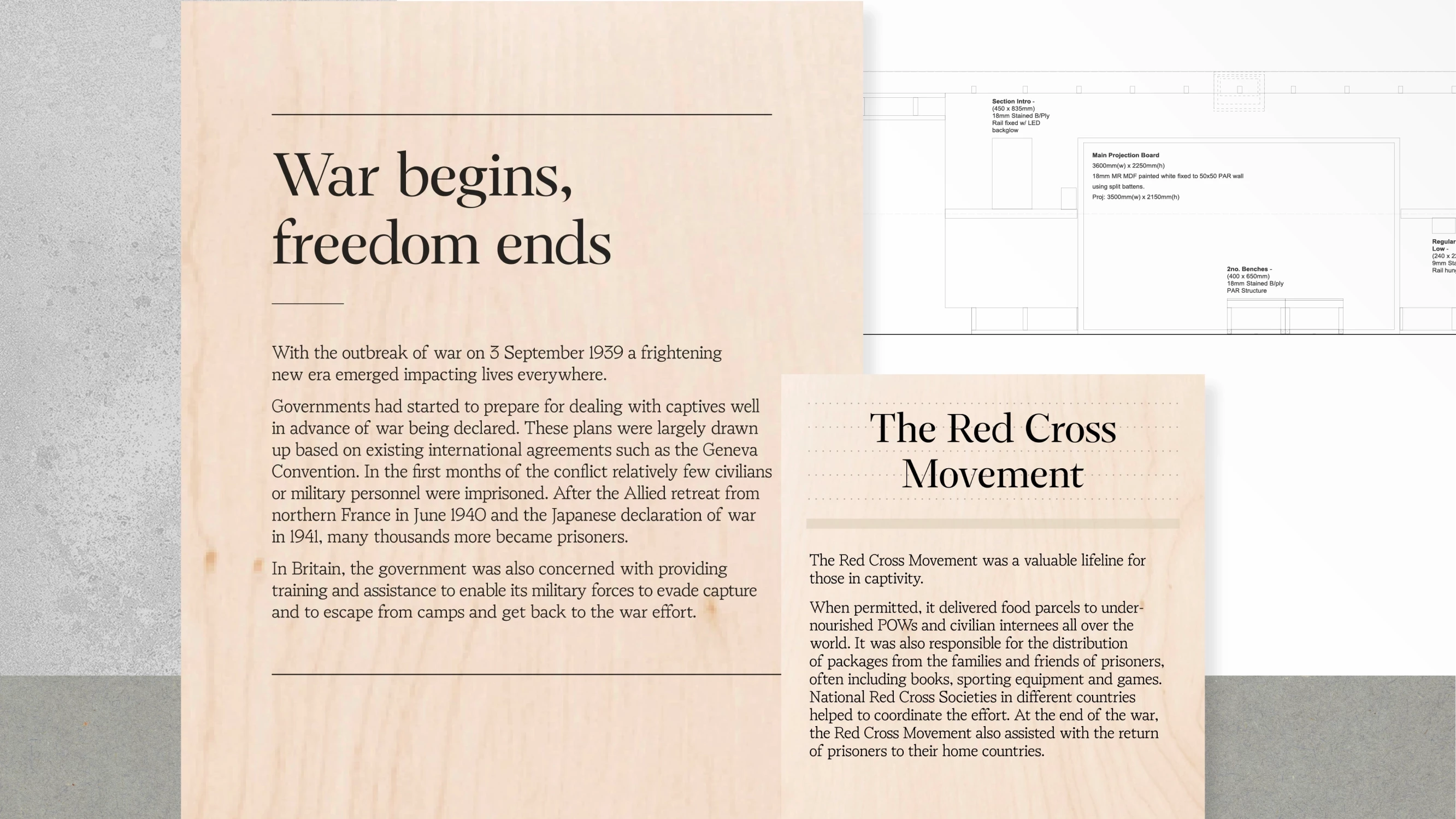
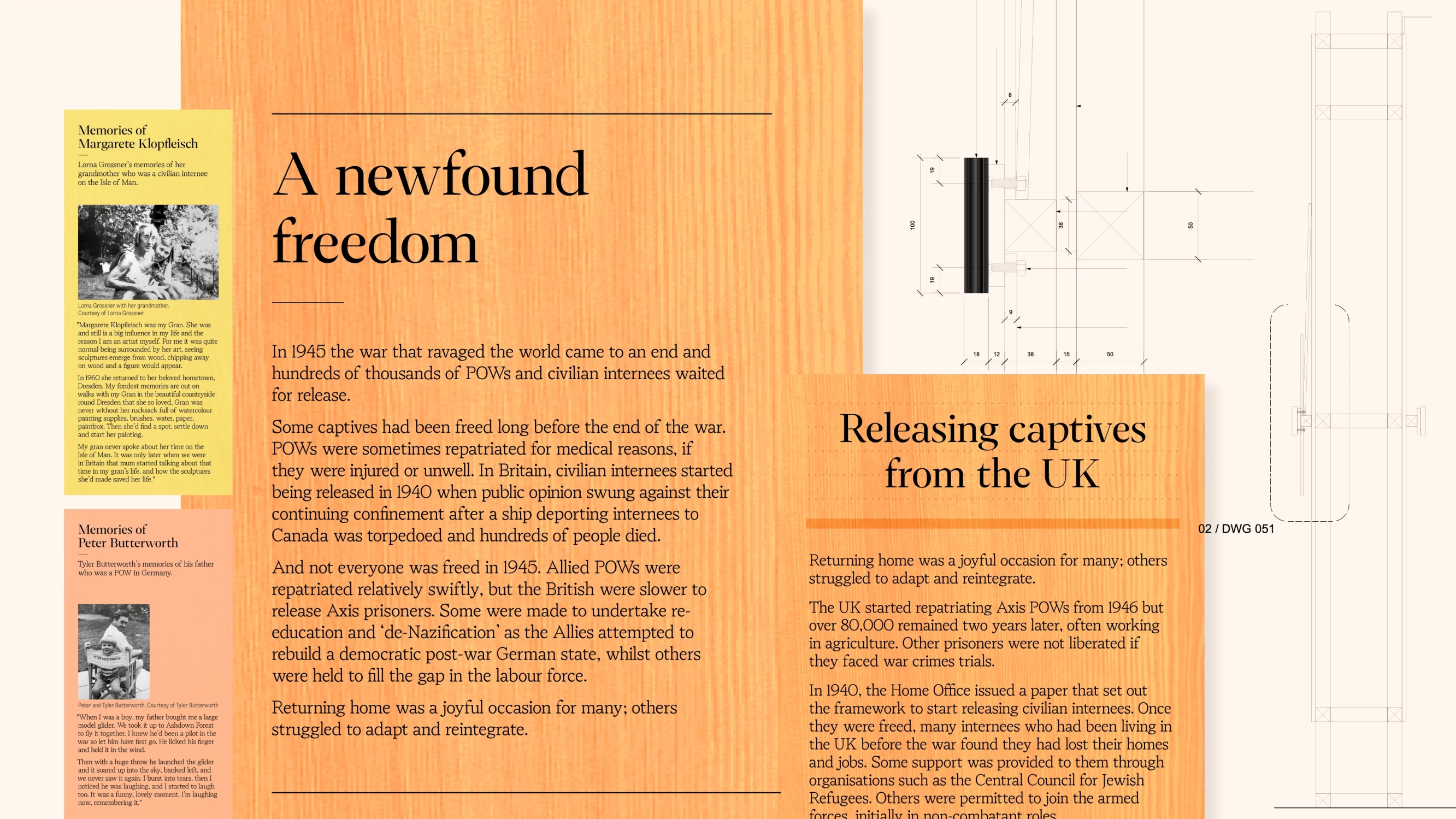
Contrasting with the light tones, area two takes visitors to a mentally and physically dark space, showcasing real stories of POWs and Internees. In amongst these stories there is hope in the ways that people found escapism, such as music, theatre or art, or in the actual attempts at escape.
Area two is a dark space, broken up subtly with small glimpses of light to infer hope and positivity, if only temporary.
The AV takeover, 'Numbers, Names, Faces' – played across the entire exhibition every 20 minutes – is less subtle, providing an unavoidable insight into the mundane and repetitive nature of life in captivity. It’s a moment of non-controllable order, playing into every area of the gallery to give a single experience to all visitors. This is the only piece of AV that uses sound – shocking visitors into stopping, to absorb the information that is given.
Angus MacKenzie, Head of Design, FieldFonts for each geographical authority were drawn from everyday cultural references; a reflection of the captive’s home life and familiar visual associations. For a gallery visitor this typographic system would allow instant associations and geographical distinction at a glance. The subtle LED backlighting further reinforced distinguishing between German, Japanese and British authorities.
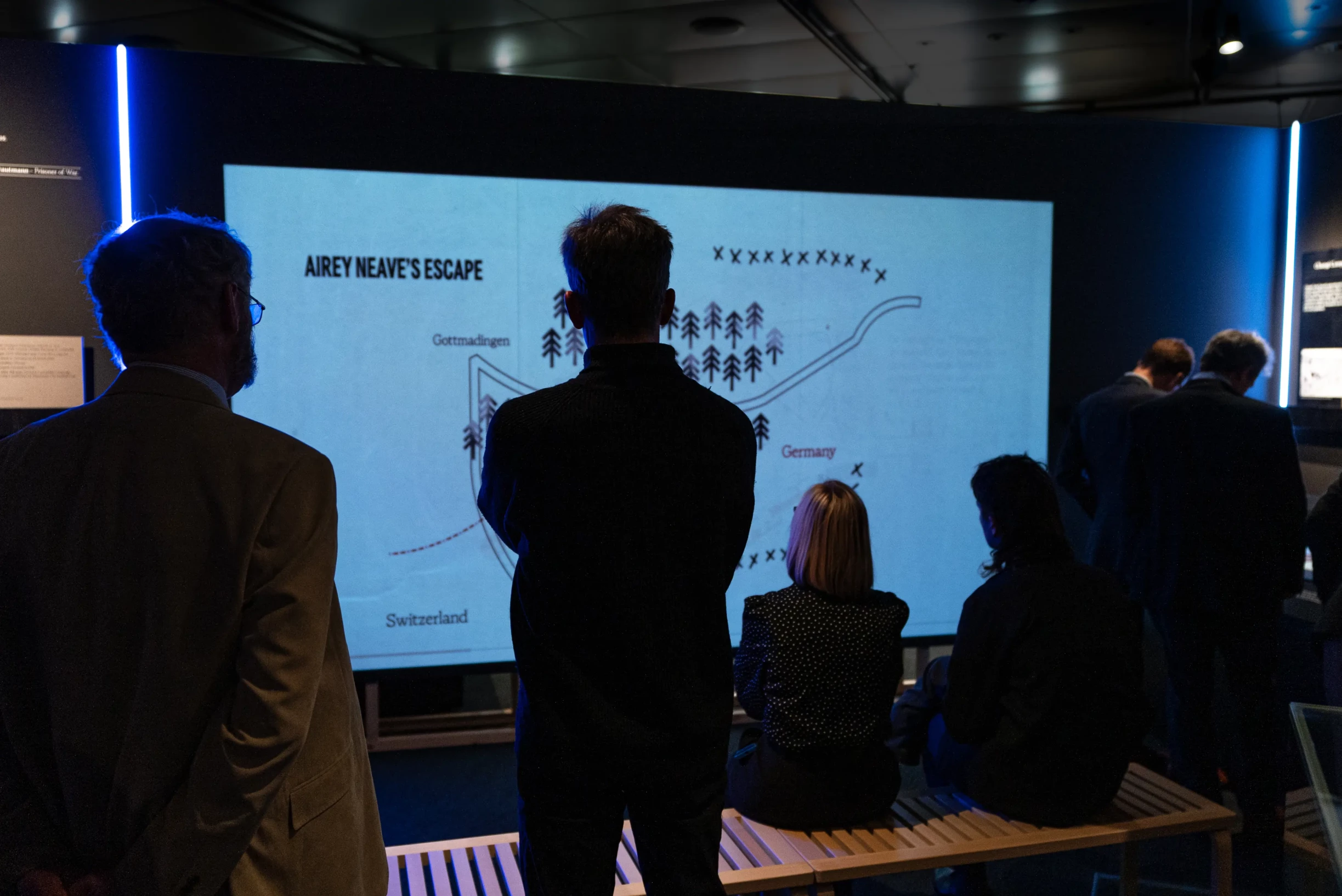
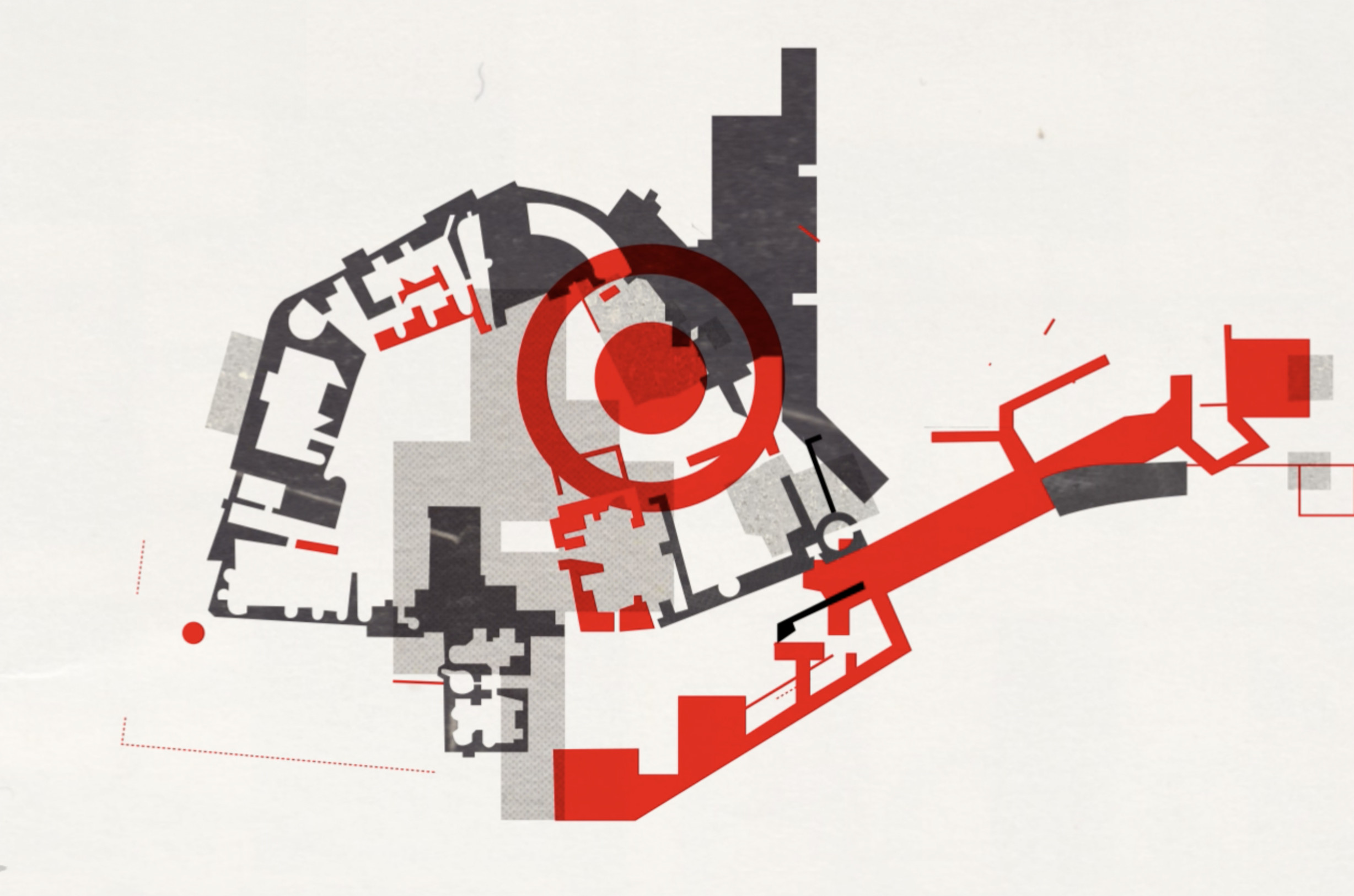
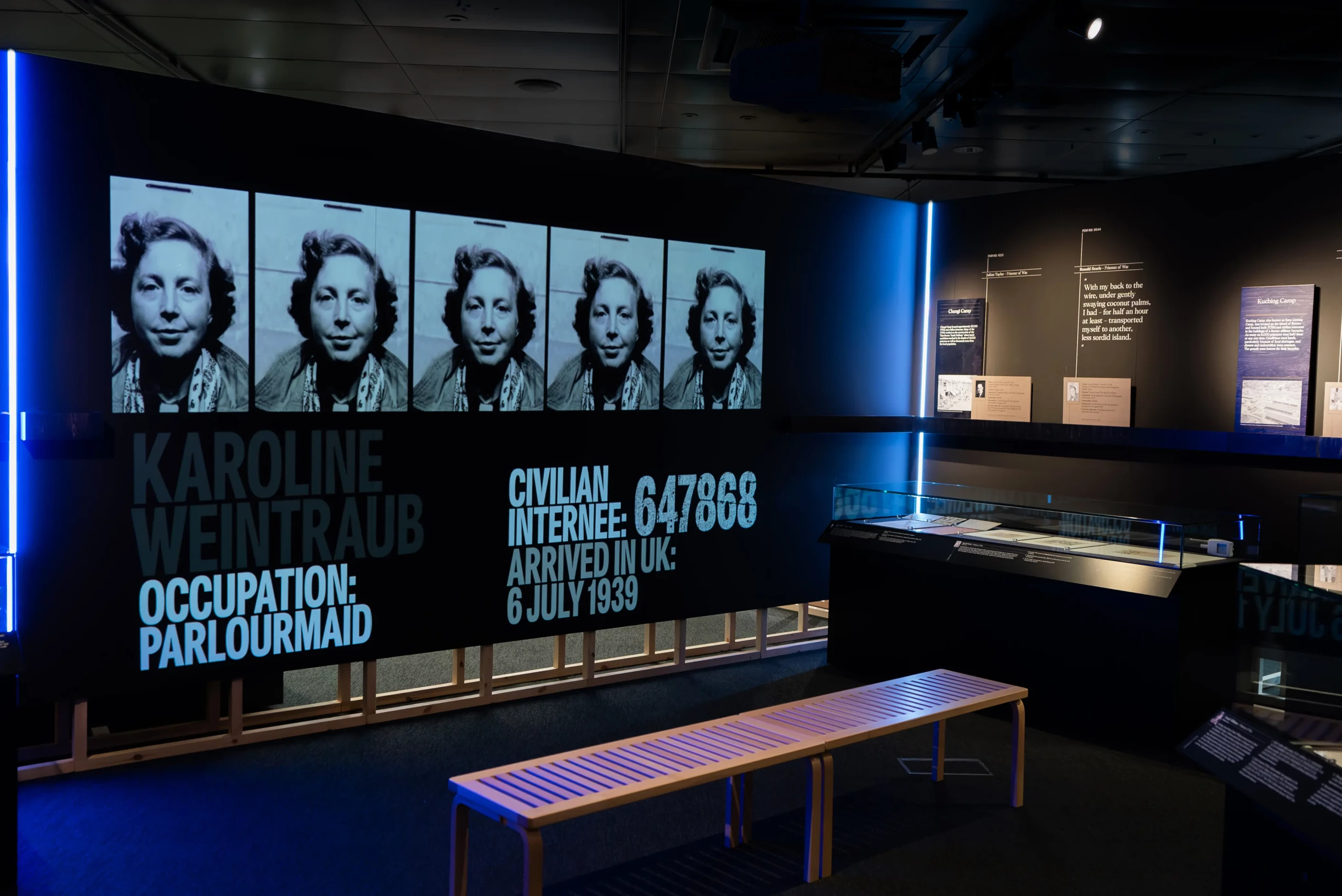
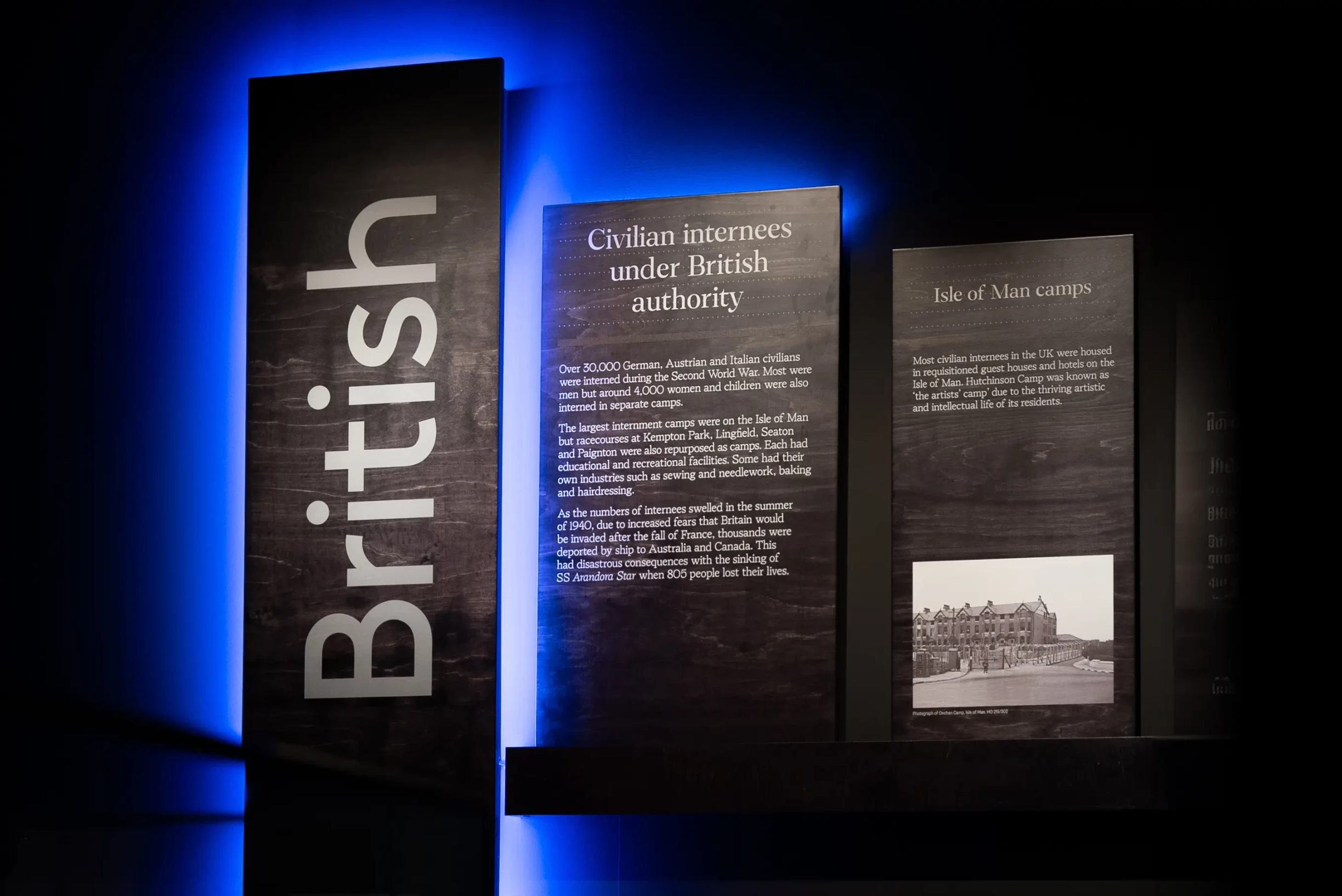
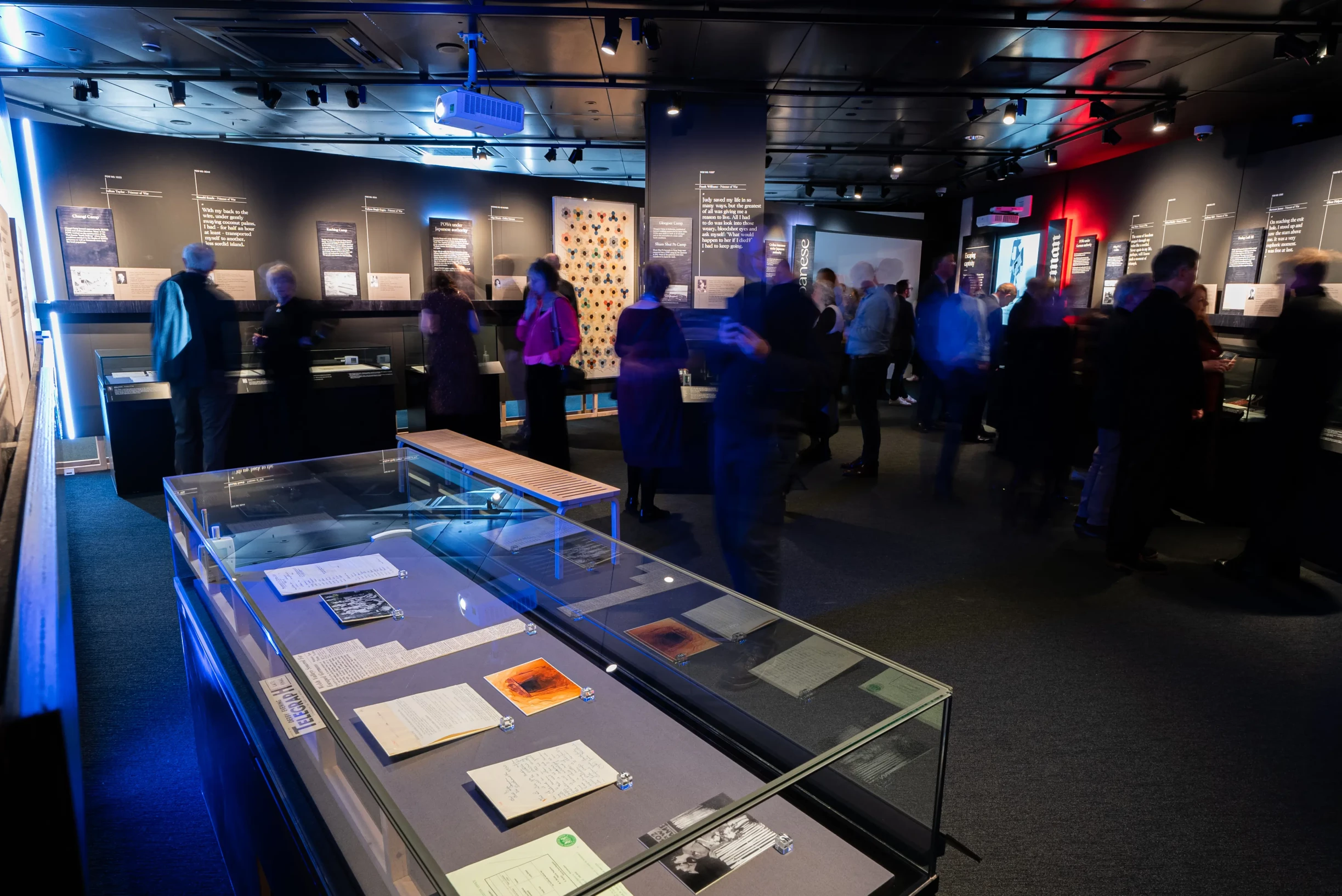
The narrative shifts to liberation in area three, a brighter, warmer space where light shades of orange hint at positivity. This area delicately balances hope and freedom, sharing the stories, legacies, and lives of those who made it back from the camps.
Great Escapes delicately captures a nuanced portrayal of life in captivity during one of the darkest periods in history. Field’s approach takes visitors on a compelling, intellectual and emotional journey, demonstrating the power of beautiful and careful design in storytelling and immersive experiences.
Juliette Johnstone, Exhibitions Manager at The National ArchivesField came onto the Great Escapes exhibition with a fantastic initial design proposal and very quickly got immersed in the sensitive exhibition topic. Field successfully created and delivered a coherent and successful vision across all elements of the design for Great Escapes, that is sleek, streamlined, polished and expertly maximises a relatively small space. They have told the lesser-known stories (involving millions of people) who were held in captivity during the Second World War and in doing so created a wonderful space to draw visitors in. Visitor satisfaction has been very high at 94%
